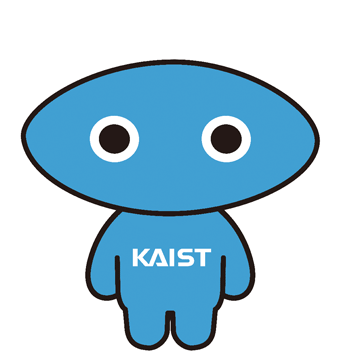OCL?
OCL은 1995년 IBM에서 Insurance division에 대한 비지니스 모델을 작성하기 위해서 개발되었고 UML version 1.1에 추가가 되었습니다. UML은 객체들에 대한 관계를 표현할 수 있지만 제약사항에 대한 표현의 한계를 지니고 있습니다.
예를 들어서 Mortgage(대출)에 startDate와 endDate가 있는데 startDate는 항상 endDate보다 빨라야 한다는 제약사항을 UML에서는 표현할 수 없습니다. 이러한 문제를 해결하기 위해서 개발된 것이 OCL입니다. OCL은 Object Oriented System에 제약사항을 추가하는 역할로 생각하시면 됩니다.
OCL을 사용하는 부분
| class와 type의 invariant |
| 메소드의 pre- 와 post- condition |
| operation에 대한 제약 |
| 요구사항과 명세 |
OCL Example

대출 시스템에 대한 UML Class Diagram 입니다.
여기서 두 개의 제약사항을 추가해보겠습니다.
1. Person은 자신이 소유하고 있는 집에 대해서만 Mortgage(대출)을 빌릴 수 있다.
2. startDate는 endDate보다 빨라야 한다.
이 제약사항을 OCL 언어로 바꾼다면 다음과 같이 기술할 수 있습니다.
|
1. context Mortgage invariant: self.security.owner = self.borrower |
|
2. context Mortgage invariant: self.startDage < self.endDate |
1번은 "Mortgage객체에 대한 security(House)의 소유자와 Mortgage객체에 대한 borrower(Person)이 같다" 입니다.
2번은 "Mortgage객체에 대한 startDate 는 endDate보다 작다" 입니다.
self는 객체 자기자신을 명시적으로 나타내기 위해서 사용되며 생략이 가능합니다.
따라서 위의 OCL은 다음과 같이 기술할 수 있습니다.
|
1*. context Mortgage invariant: security.owner = borrower |
|
2*. context Mortgage invariant: startDage < endDate |
여기서 하나를 더 추가해보겠습니다.
3.대출이 된 집의 value는 0보다 커야 한다.
|
context Mortgage invariant valuerestriction: self.security.Money > 0 |
여기서 valuerestriction은 해당 invariant에 대한 설명을 나타냅니다.
Invariants using Navigation
context 객체가 아닌, context와 association을 하고 있는 객체에 대한 설명과 제약사항을 나타내기 위해서 화살표를 사용합니다.
|
context CustomerCard |
|
printedName -> a String. |
CustomerCard 객체와 연관된 owner 객체에 대한 설명이 있습니다.
* String은 OCL에서 정의된 Type 입니다.
* concat(String) : String 또한 OCL에서 정의된 method입니다.

Collection Type
multiplicity 가 1보다 큰 경우 Navigation의 association에서 역할은 Collection type이 됩니다.
Collection에 대한 operation은 'Collection -> op_name' 를 통해서 접근할 수 있습니다.

UML에서 Customer는 여러 종류의 Membership을 가질 수 있습니다.
|
context Customer |
Operations)
| <collection> -> | size() |
| isEmpty() | |
| notEmpty() | |
| sum() | |
| count(object) | |
| includes(object) | |
| includesAll(collection) |
types)
| set | no duplicates |
| Bag | duplicates allowed Bag을 Set으로 바꾸기 위해서는 Bag -> asSet Naviation을 추가 |
| Sequence | ordered Bad |
여기서 membership은 Collection 타입으로 Memebership 객체의 집합을 나타냅니다.
| The partners of a loyalty program have at least one delivered service | The number of a customer’s programs is equal to that of his/her valid cards |
|
context LoyaltyProgram |
context Customer |
includeAll)
아래 두 개는 고객의 멤버십카드가 고객의 카드라는 제약사항을 나타냅니다.
| The cards of the Memberships of a customer are only the customer’s cards |
The owner of the card of a Membership must be the customer in the membership |
|
context Customer |
context Membership |
* 두 개 중에 더 나은 것은 Membership을 context로 잡은 2번째입니다.
* includesAll 부분은 "Customer의 카드는 ( )안에의 카드를 모두 포함해야 한다"를 나타냅니다.
* Membership.card는 고객의 모든 멥버십의 카드이므로 collection입니다.
includes)
includes는 collection type에 대한 operation입니다.
괄호 안에 있는 것을 포함해야 합니다.
| A customer card belongs only to a Membership of its owner |
|
context CustomerCard |
|
owner -> a Customer instance. |
* membership은 customer card의 멤버십이므로 하나만 존재합니다.
More operations)
<b.e.> : boolean expression
<v.e.> : values expression
| <collection> -> | select (e : T | <b.e>) |
| reject (e : T| <b.e>) | |
| collect (e : T| <v.e.>) | |
| forAll (e : T* | <b.e.>) | |
| exists (e: T| <b.e.>) | |
| iterate(e:T1; r:T2 = <v.e.> | <v.e.> |

아래 두 개는 동일한 제약사항을 나타냅니다.
|
고객의 카드의 이름에 고객의 이름이 붙는다. |
|
| context StoreCard invariant: printName = owner.title.concat(owner.name) |
context Customer |

|
Modules can be taken iff they have more than seven students registered |
context Module invariant: taken_by -> size() >7 |
|
The assessments for a module must total 100% |
context Module invariant: set_work->sum() =100 |
|
Students must register for 120 credits each year |
context Student invariant: takes.credit->sum() = 120 |
|
Students must take at least 90 credits of CS modules each year |
context Student invariant: takes->select(code.substring(1,2)='CS')->sum()>=90 |
|
All modules must have at least one assessment worth over 50% |
context Module invariant: set_work->exits(weight>50) |
|
Students can only have assessments for modules which they are taking |
context Student invariant: takes->includeAll(submits.for_module) |
'프로그래밍' 카테고리의 다른 글
| [프로그래밍문제] 중괄호 해제하기 (0) | 2020.07.07 |
|---|---|
| State Machine Diagram 에 대한 설명 (0) | 2020.07.07 |
| [백준 11054 가장 긴 바이토닉 부분수열] 파이썬 풀이 (0) | 2020.07.05 |
| [백준 9251 LCS] 파이썬 풀이 (0) | 2020.07.05 |
| [백준 실버 1912 동적프로그래밍] 연속합문제 파이썬 (0) | 2020.06.30 |
